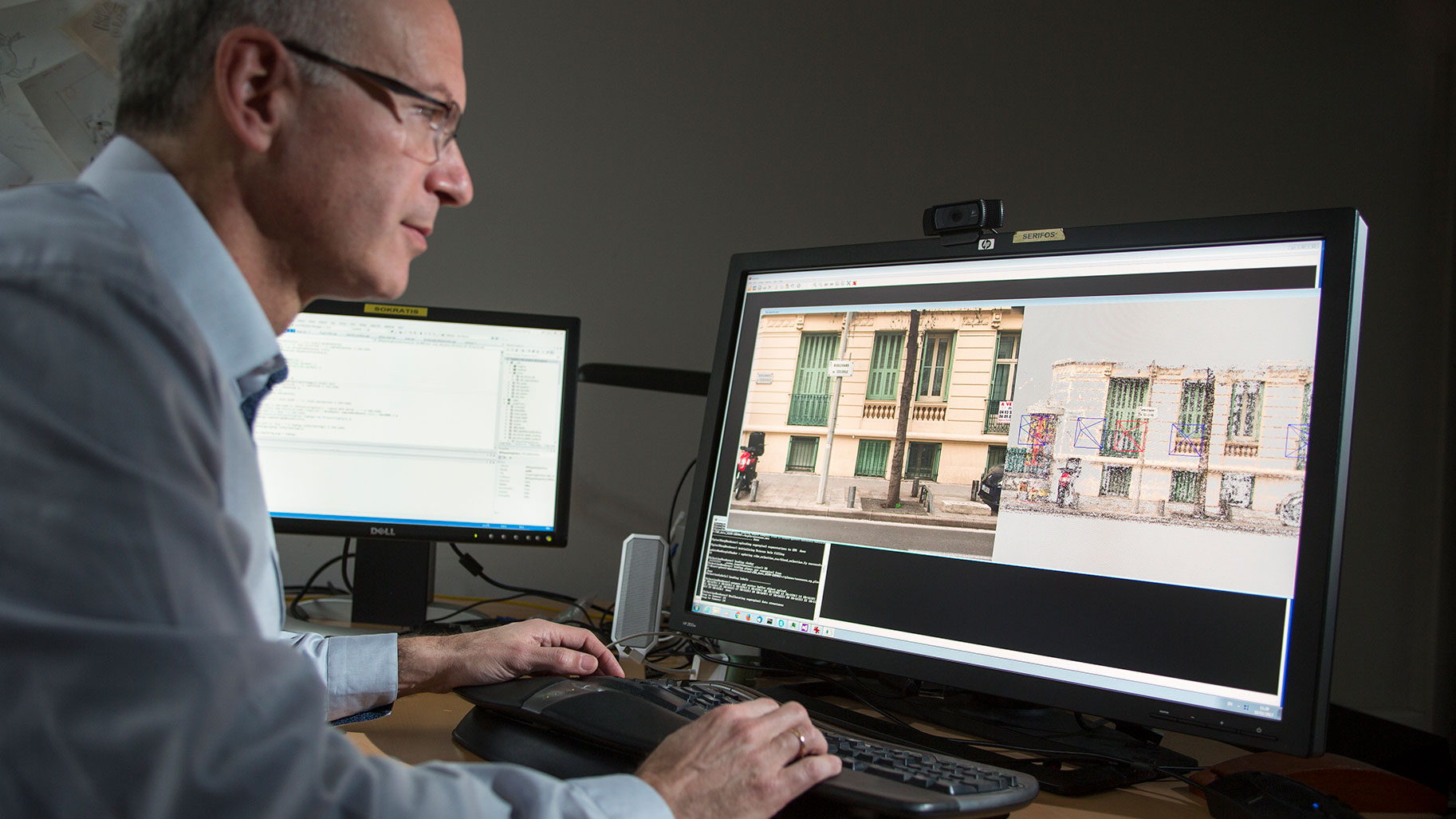George Drettakis: an entire career devoted to bringing 3D images to life
Date:
Changed on 03/04/2025

“At the moment, it’s all happening at once”, observes George Drettakis with a smile. “The incredible success of our 3D Gaussian splatting algorithm, my second ERC Advanced Grant, the Eurographics scientific association honouring me for my career as a whole, and now this Inria - Academy of Sciences Grand Prize… ” An accumulation of good news that the researcher modestly describes as “an achievement, but not the brass ring”.
George Drettakis has been pursuing the same dream for 30 years: to overcome obstacles to the use of computer-generated images, by making them as easy to create and manipulate as our smartphone photos and videos. “When I started out, it was very difficult to create and display scenes in 3D. They weren’t realistic at all and couldn’t be displayed in real time, nor generated from photos. Computer graphics has come on in leaps and bounds and I’m proud to have contributed to that.”
Recruited by Inria in 1995, he launched and led two research teams: Reves, from 2000 to 2015, then the Graphdeco team which now has about twenty members. At the same time, he quickly moved up the ladder to become Director of Research in 2003. His work has indeed left a significant mark on the scientific community.
From 2002, he and a PhD researcher created a shadow calculation algorithm for 3D scenes. This was soon adopted by the video gaming industry, as it made the images much more realistic than the awkward, staircase-effect shadows generally seen at that time. Even today, the publication on this algorithm remains the second most frequently cited of his career.
Two years later, the researcher contributed to another great advance with an algorithm to combine 3D scenes with sound effects, as in real life: “Neuroscience had shown us that in an environment with dozens of sound sources, certain frequencies mask others, rendering them inaudible. Reproducing this phenomenon in 3D scenes made them much more realistic.” A patent was registered and the technique was used above all in motor-racing video games.
At the same time, George Drettakis pursued his longer-term goals, including that of creating 3D scenes from photographs taken from various angles, then trying to “move” within those scenes to observe them from different perspectives. In 2013, he and his colleagues published a pioneering algorithm that made this possible. Then, in 2017, he obtained a FUNGRAPH ERC Advanced Grant and put together a team to work on this topic in more depth for the five years that followed.
At that time, artificial intelligence (AI) and machine learning had begun to take off. The researcher began to build on this progress in 2018: “To achieve greatly enhanced processing power, our AI colleagues ran their algorithms on graphics processing units (GPU) that I’d already been using for 25 years. They were unfamiliar with such equipment and therefore unable to exploit its full potential. My colleagues and I were able to adapt their algorithms for our own purposes and optimise them by taking full advantage of the GPUs’ capabilities.”
The outcomes of this ERC echoed across the planet and, in 2023, George Drettakis and his team released their 3D Gaussian splatting algorithm, intended for the creation and display of 3D scenes with greater speed and precision than even the best Google or Nvidia software could provide! Within a few months, the algorithm had been adopted by companies across the world and in every sector: online retail, video games, virtual reality, property, public works, archaeology, surgery training, etc. “And it isn’t over yet. The facilitated reconstruction of real-life environments in 3D opens up virtually unlimited possibilities!”
Obtaining an ERC Advanced Grant is a high point in the scientific career of any researcher. And George Drettakis has obtained two! He received the second in 2024, to leverage the power of generative AI deep learning models to achieve even more realistic results.
“For example, it is impossible today to change lighting conditions in a 3D scene without spending hundreds of hours on it. With the help of AI, we intend to automate this operation while observing the laws of physics in terms of light propagation. This would enable us to display different versions of the same 3D image, morning or evening, winter or summer, etc.”
The researcher admits to having other avenues to explore, including the reuse of 3D scene fragments to create new ones, combine them with artists’ images, identify a scene’s materials to deduce their light-reflecting properties, and so on. “My work is mainly focused on algorithms. Inria allows me to spend several years exploring a subject, even if I don’t necessarily obtain results that can be applied afterwards. It’s a godsend!”
1994: PhD in IT from the University of Toronto (Canada)
1995: Researcher at Inria Grenoble Rhône-Alpes
2000: Founder of the Reves research team at Inria Sophia Antipolis-Méditerranée
2003: Research director
2007: Honoured for his work by the Eurographics scientific association
2015: Creator and Director of the Graphdeco team
2017: Awarded an ERC Advanced Grant
2023: Publication of his Gaussian splatting algorithm for the creation and display of scenes in 3D
2024: Awarded a second ERC Advanced Grant and honoured by Eurographics for his overall career.